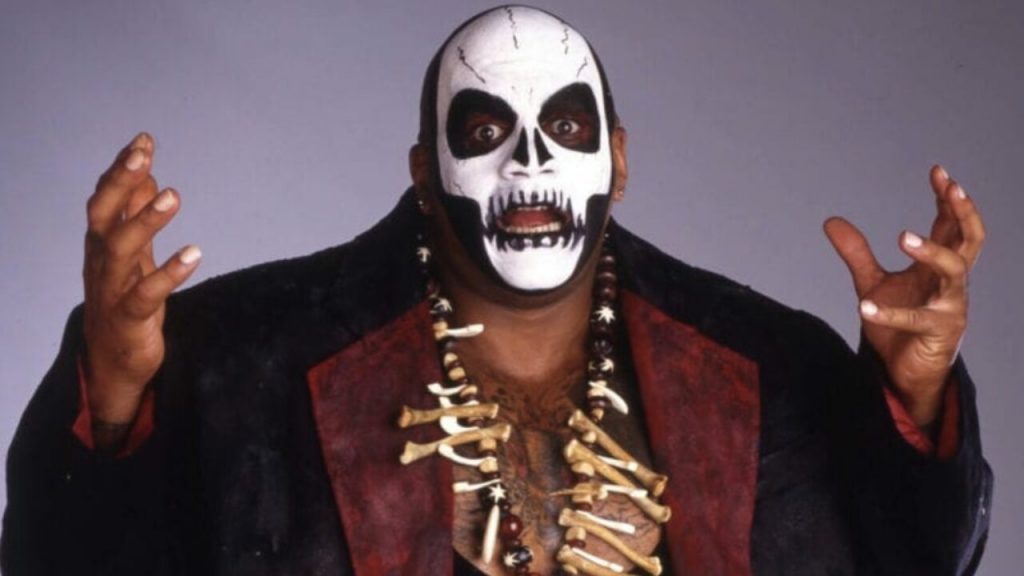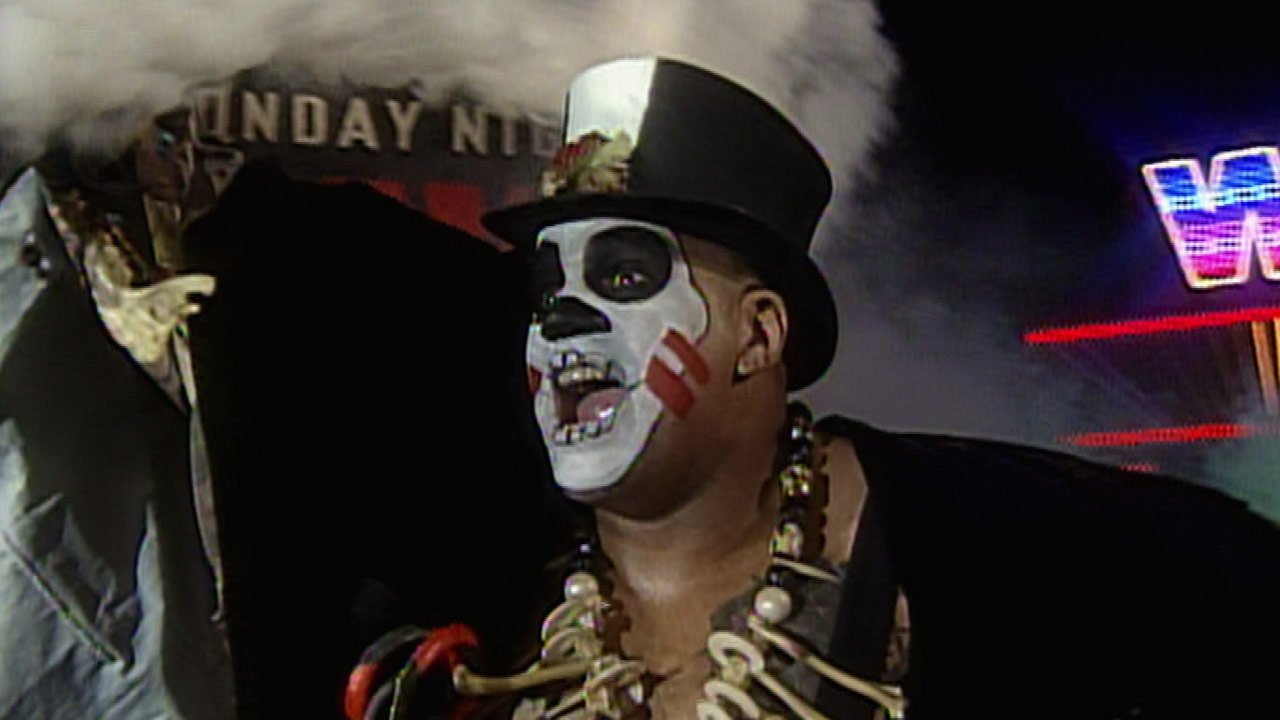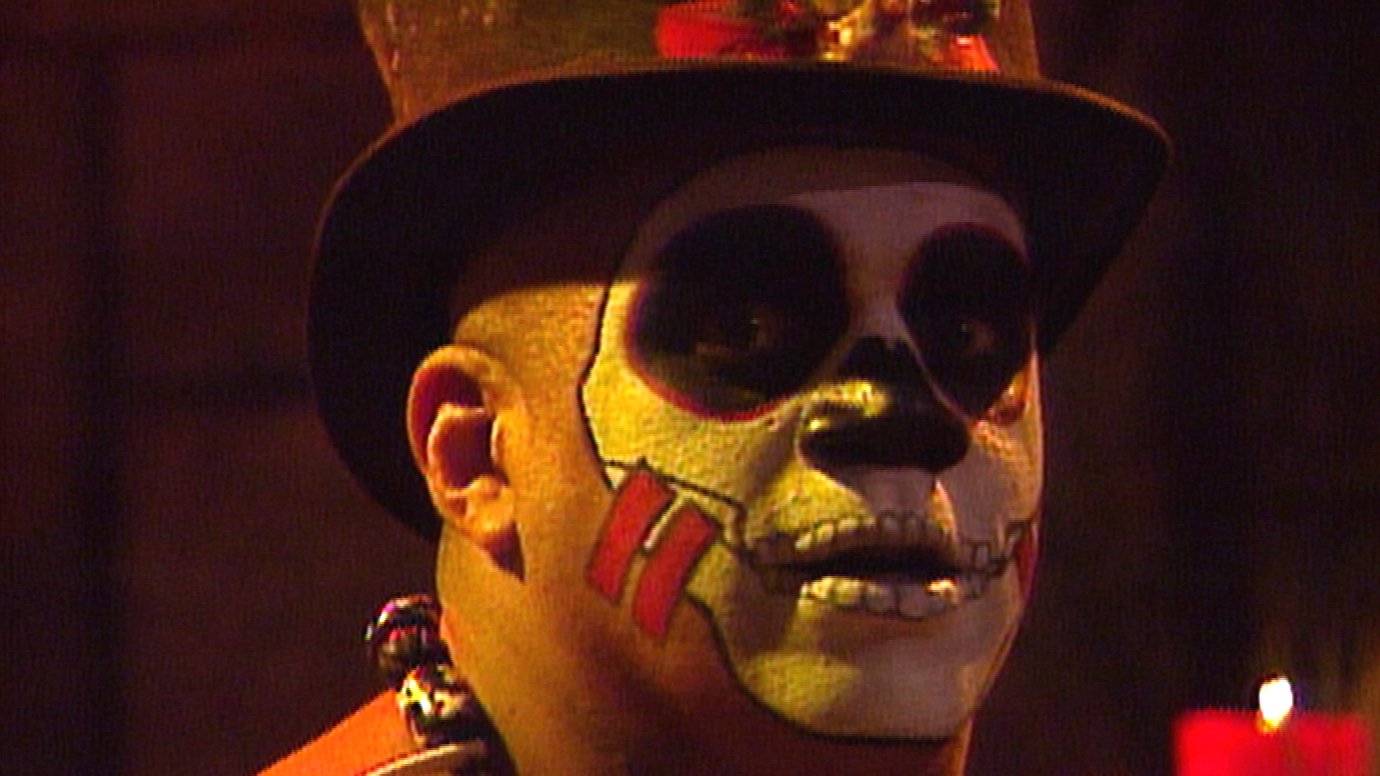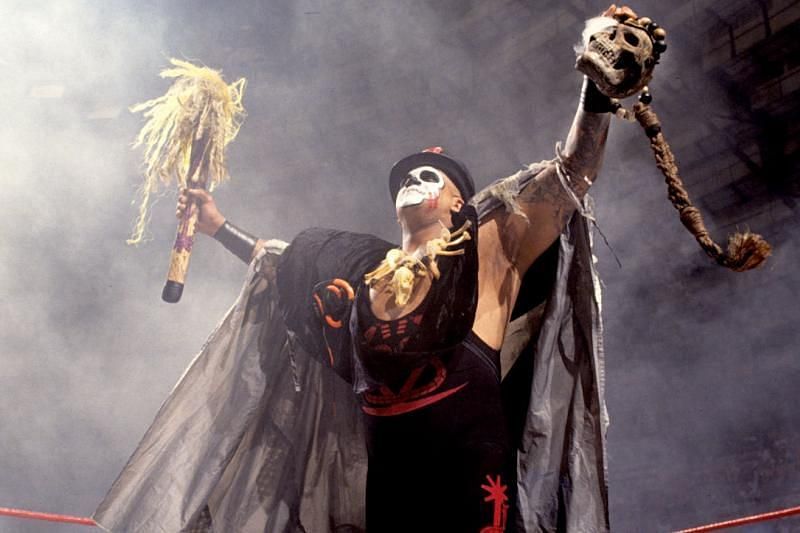This is a character that was intended to be fearsome. But ended up sticking around to scare audiences for only a short time before fading into the shadows. In recent years, if the character has been referenced or popped up again, it is for the purpose of gentle mocking or outright derision rather than terror. The character in question is the ‘voodoo magician,’ Papa Shango.
When you cast your eye over the history of wrestling in search of characters designed to be frightening or to in some way engender discomfort or fear in the audience. The examples you will find are frequently rooted in fearsome characters from other parts of popular culture.
This is in part because some concepts or tropes have proven to consistently provoke fear in large swaths of the public. Another reason for this re-use of what has worked in other forms of entertainment. This is because it is not always easy to find something wholly original that elicits the same response as the tried and true archetypes.
Sometimes it may be because decision-makers find an example particularly interesting, or unique. Perhaps it just scared the pants off of them and they think it may have the same effect on others.

Papa Shango | The Darkness Within The Magic
The Papa Shango character debuted in the WWF in early 1992. It stuck around for a year and a half before fading away. For the performer that portrayed him, Charles Wright, Shango was one of the first gimmicks he was given in the promotion.
He later went on to portray Kama Mustafa. Mustafa was presented as a mixed martial arts fighter but had his greatest success as The Godfather. The Godfather was the name used when he was inducted into the WWE Hall of Fame.
As stated at the outset, the inspiration for scary wrestling characters is often drawn from elsewhere in popular culture. Papa Shango was a prime example of this. Indeed, his appearance very closely mirrored that of the character of Baron Samedi from the James Bond movie ‘Live and Let Die’. His look was inspired by the unnerving individual from that movie which came out twenty years prior.
For those who have not seen the film, it is set primarily in Louisiana and the Caribbean and features 007 crossing paths with a villain who manipulates people who work for him. The general population of the Caribbean island where he resides by exploiting their fear of voodoo.
To that end, he employs a voodoo ‘priest’ called Baron Samedi, who wears a top hat and black coat and has a skull painted on his face. Papa Shango’s appearance was clearly a very close replica of Samedi’s; indeed, it was basically a carbon copy.

The Use Of The Supernatural
During the year and a half, Shango was in the WWF; the promotion used some of the same techniques they have used for other supernatural characters—he was accompanied to the ring by billowing smoke and could cause the lights in the arena to flicker and darken.
And he performed other supernatural acts as well; he could, through ‘voodoo magic,’ cause opponents pain, and on one memorable occasion, he caused his rival at the time, the Ultimate Warrior, to vomit.
I used to read books on voodoo, in fact, I built an entire voodoo library. Everything I said in my promos was real and legit. All the props were from voodoo stores. It was totally authentic.
The effects guys worked with the staffs and sticks so that they all did something different. I had a bunch of them – some would shoot sparks, others had smoke and lights that came out of them.
– Charles Wright on Papa Shango
That was actually part of Shango’s only real rivalry in the company, as he and the Warrior had an on-again/off-again feud that featured vignettes such as the vomit-inducing referenced above, but never had a match to settle the program as Warrior left the company.
After that storyline was cut short, Shango continued to make periodic appearances, perhaps not engendering the kind of fear that was intended despite his sinister look and mannerisms, which also included a staff with a skull on it and another skull he swung on a rope that dispensed clouds of smoke and was used in his ‘spells.’
By the summer of 1993, Shango was gone from the WWF, though Charles Wright would return not too much later, after which he had a prolonged tenure in the company using the gimmicks mentioned above.

The Haitian Vodou Religion
It is important to note that the Baron Samedi character from the Bond film was itself not an original concept. Baron Samedi is actually the name of a spirit that is part of the Haitian Vodou religion. The appearance of the film character, and Papa Shango, mirror the common depiction of this spirit, called a Loa. Loa is tied to death and resurrection.
Vodou is a prevalent religion in Haiti and has its origins in the West African Vodun religion. As does the related Voodoo religion that is practiced in Louisiana. The Vodou character of Samedi is, for believers in the religion, not a fearsome one.
Though he can be a harbinger of death. However, in the Bond film, the main villain dressed his henchman in Samedi attire in order to instill fear. Thus Papa Shango was similarly intended to be fearsome.
Shango’s visual reference to a Vodou loa, and his use of ‘voodoo curses’ and other sinister, magical actions, is rooted in the negative stereotypes. These stereotypes are of both the Haitian Vodou and Louisiana Voodoo religions, which are usually conflated by outsiders.
Even though both religions have evolved over the centuries to incorporate elements of Christianity. They are commonly viewed as pagan and, therefore, evil by Christians. The practices of those religions are considered sinister and suspect.
Considering that the vast majority of adherents of both Vodou and Voodoo are Black, there is an element of racism in the negative perception and portrayal of religions by other religions and popular culture.
Wrestling with Witchcraft
This negative perception has led to these religions being depicted in popular culture as practiced by dangerous, vicious, and villainous characters. In some films and television programs have even linked the religions to witchcraft and Satanism. This goes back at least to the film ‘White Zombie’ from the 1930s.
Common tropes in books, films, television, and elsewhere are that practitioners of the religions, which are lumped together under the name voodoo, are skilled at inflicting pain remotely. For instance through ‘voodoo dolls,’ can raise the dead as zombie servants, and enjoy using poison and other potions. They then shrink the heads of enemies they have killed.
Wrestling fans will note that Papa Shango utilized most of these actions. He inflicted pain remotely; he induced vomiting, possibly by this same method or perhaps by poisoning. The skull swinging on the rope may have been an allusion to a shrunken head. He didn’t employ any zombies.
At the time, the WWF already had a character (The Undertaker) who incorporated zombie tropes from popular culture. The design of the ‘evil voodoo magician’ Papa Shango, leaned on this negative perception that permeates popular culture. One that Vodou and Voodoo are ‘black magic’ that is to be feared.

The Perils of Papa Shango
As noted at the outset, the Papa Shango character had a short shelf life in the WWF. While intended to be frightening, he was generally met with derision. This included winning the Wrestling Observer Newsletter award for ‘Worst Gimmick’ in 1992.
Some fearsome characters work better than others in eliciting the desired reaction from the wrestling audience. This one obviously was not one of the better ones. Considering the character concept’s roots in religious bigotry and below-the-surface racism. Perhaps it is just as well that, when this wicked magician has been summoned in recent years, it is only so it can be mocked.









